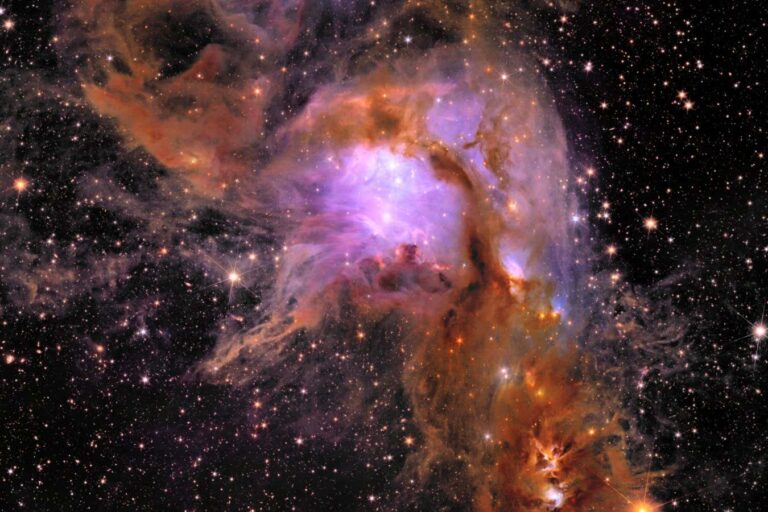Euclid’s image of star-forming region Messier 78
Messier 78 ESA/Euclid/Euclid Consortium/NASA, Image processing: J.-C. Cuillandre (CEA Paris-Saclay), G. Anselmi; CC BY-SA 3.0 IGO or ESA Standard License
The Euclid Space Telescope team has released its first scientific images, showing a twinkling galaxy cluster, a stunningly sharp image of a nearby spiral galaxy, and colorful clouds of interstellar gas that are home to hundreds of thousands of young stars.
The photo above shows a star-forming region called Messier 78. The Euclid telescope is much more sensitive than previous telescopes, and has discovered over 300,000 new objects in this image alone, most of which are newborn stars. Some of these objects are rogue planets, which do not orbit a star but drift around on their own. It was previously impossible to find rogue planets in this region.
The two images below are of galaxy clusters called Abell 2390 and Abell 2764. Future observations with the Euclid Telescope will reveal many more clusters like this one. One of the telescope’s main goals is to map dark matter in the universe, and studying how light from distant galaxies is distorted as it passes through these clusters is one way of finding the gravitational effects of dark matter.

Euclid’s View of Abel 2390
ESA/Euclid/Euclid Consortium/NASA, Image processing: J.-C. Cuillandre (CEA Paris-Saclay), G. Anselmi; CC BY-SA 3.0 IGO or ESA Standard License.

Photograph of Euclid looking at a bright star near Abel 2764
ESA/Euclid/Euclid Consortium/NASA, Image processing: J.-C. Cuillandre (CEA Paris-Saclay), G. Anselmi; CC BY-SA 3.0 IGO or ESA Standard License
Euclid has also taken images of individual galaxies within the cluster, like the two shown in the image below. These galaxies are part of the Dorado Group, and are in the middle of a complex dance of zipping past each other and eventually merging.

Euclid’s image of the Dorado galaxy group
ESA/Euclid/Euclid Consortium/NASA, Image processing: J.-C. Cuillandre (CEA Paris-Saclay), G. Anselmi; CC BY-SA 3.0 IGO or ESA Standard License.
Pictured below is a giant spiral galaxy called NGC 6744. Detailed images like this allow researchers to study the formation of galaxies in great detail. Researchers have already used Euclid’s data to discover a never-before-seen dwarf galaxy orbiting NGC 6744.

Image of Euclidean spiral galaxy NGC 6744
ESA/Euclid/Euclid Consortium/NASA, Image processing: J.-C. Cuillandre (CEA Paris-Saclay), G. Anselmi; CC BY-SA 3.0 IGO or ESA Standard License
These five images, along with 12 others that have yet to be fully analyzed, were taken over just 24 hours of observing time. “Once the mission is complete, the Euclid Atlas will be the most detailed astronomical imagery ever made, so this is basically a hint at the capabilities of the observatory,” he said. Roland Vavrek“The fact that we can get all this in one day shows just how much data we can get from a six-year mission,” said Euclid team member David Schneider of the European Space Agency.
topic:


